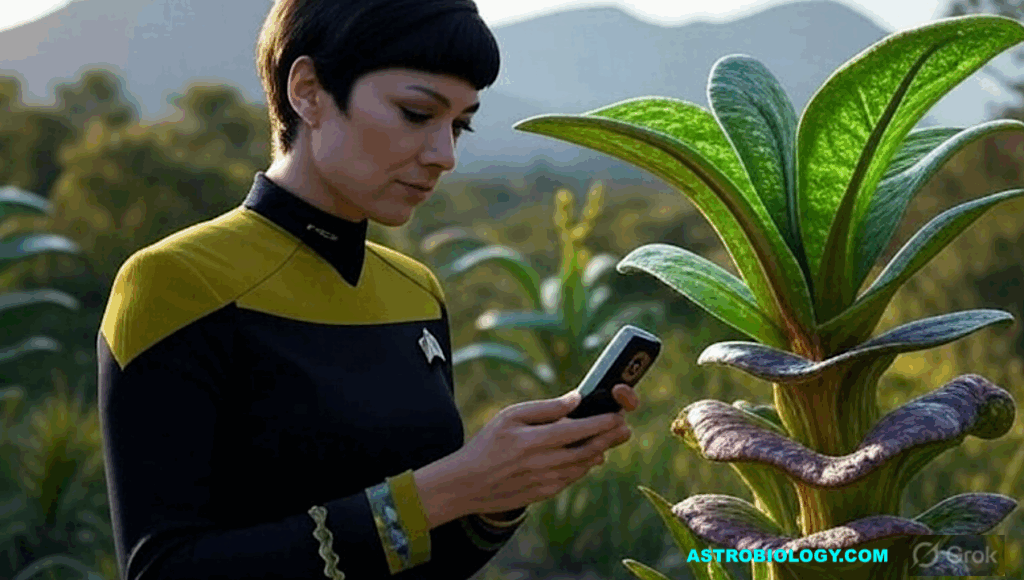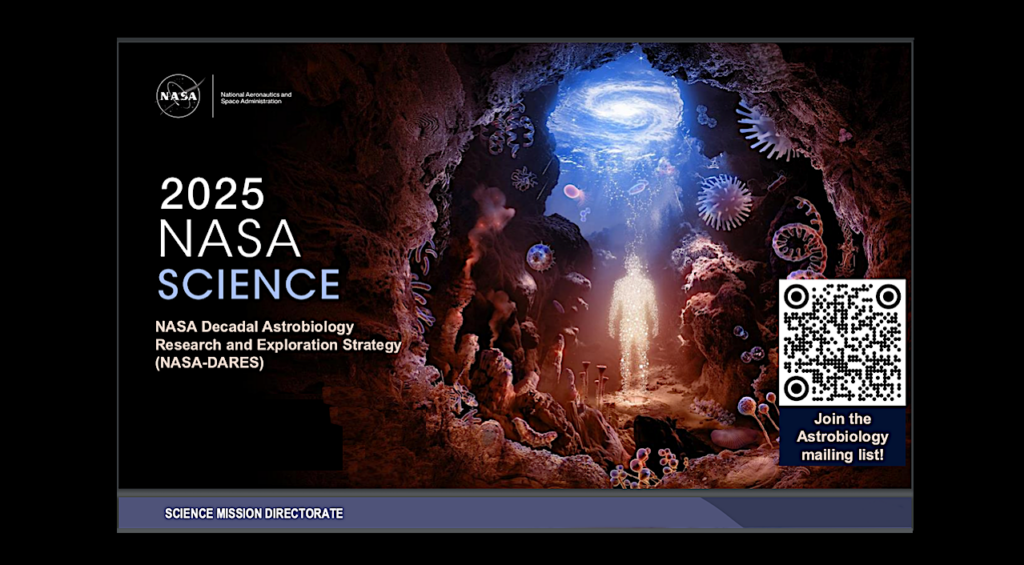NASA Astrobiology Institute Director's Corner
Even though the NAI doesn’t operate on an academic year calendar, I can’t help but feel that we are starting a “new year” this month. It’s not just that I became Director on Sept. 17, 2006, exactly a year ago, but also that one of NAI’s most important milestones, presenting our programs to the National Research Council (NRC) committee reviewing the Institute, was completed just before the Labor Day weekend.
Supporting that review came on the heels of NAI achieving two other major milestones that we adopted my first week on the job. Many of us spent the first part of that week participating in the Pale Blue Dot III Workshop at the Adler Planetarium and Astronomy Museum in Chicago. On Thursday, we held an in-person meeting of the NAI Executive Council. It was at that meeting that the Principal Investigators, together with NAI Central and NASA Headquarters managers, mapped out a strategy for the coming year. The PIs agreed to a 30% budget cut, both to adjust to lower funding to the Institute and to free up funds for new initiatives. They urged that we create a substantial Director’s Discretionary Fund (DDF) to pursue timely new research areas and that we select new teams from the fourth NAI competition (CAN-4) held the year before. I am proud to say that both of these have now been accomplished.
We began a process to define new strategic directions for the Institute by agreeing at the Chicago meeting to hold a workshop the following January hosted by our University of Colorado team in Boulder. In the following months the teams and NAI Central focused on laying the groundwork for that workshop. NASA Headquarters contributed excellent and much appreciated briefings on current and future missions presented remotely using the Institute’s information technology tools (podcast archives of these briefings are available at http://nai.arc.nasa.gov/smdbriefing/index.cfm).
By the time 45 PIs and other team members showed up in Boulder, we had defined what we meant by “strategic impact” (research or related activities supporting missions or developing synergies with other NASA science programs, or contributing to the development of new partnerships between NASA and other public or private organizations) and begun to explore some of the possibilities. The interactions at the workshop led to several exciting new project ideas and inter-team collaborations, some of which were pursued immediately. Finally, many of these and other projects were proposed for DDF funding and 18 selected, roughly half research projects and half conference or workshop support (see the Director’s Corner in the May 21, 2007 Newsletter for some examples http://nai.arc.nasa.gov/newsletter/display.cfm?edition=2007-05-21#216 or http://nai.arc.nasa.gov/ddf_2007/index.cfm for a complete list). We are now looking forward to a stream of important results and outcomes from these selections.
About the time we were announcing the DDF selections, we learned that we would be able to go forward with selecting new teams. The addition of new teams from the CAN-4 competition had been delayed because of the programmatic budget cut, and it was not clear for a while that selections would be possible. That they were is a tribute to the support NAI is receiving from NASA Headquarters, particularly from the new Associate Administrator (AA) for Science, Alan Stern, and his Planetary Science Division Director, Jim Green. Another strong supporter is John Rummel, the Senior Scientist for Astrobiology. Working with John, we developed a selection recommendation that was approved, adding four teams to the Institute, although at a reduced “slow start” funding level for their first 18 months. Much of that funding was provided by AA Alan Stern, who sent $1M to NAI on his first day in office, and has reiterated his support in a variety of ways since. (See the Director’s Corner in the May 21, 2007 Newsletter or the NAI website for a description of the research of the new teams.)
Finally, shortly after the new team selections were announced, so was the appointment of the NRC review committee. This review had been part of the original planning for the Institute. Since the NAI was formed in 1997-98 to develop the new field of astrobiology, a review of its success at about the 10-year mark was considered a natural part of evaluating how to move forward. We were looking forward to presenting the many successes of the Institute, but recognized that it is a complex, multi-faceted story that is more like a woven fabric than linear series of events. With the support of the Executive Council, NAI Central put together an 80+ chart presentation in which we tried to capture the richness of NAI’s accomplishments and capabilities. That presentation is available along with other review documents and presentations at http://nai.arc.nasa.gov/ec/nrcpresentations.cfm. It led to a positive and constructive dialogue with the committee and a lot of challenging questions to which we did our best to respond. Overall, I was very pleased with the dialogue with the committee and we are looking forward to their report later this year.
Lots of other accomplishments–including research highlights too numerous to summarize here (but see http://nai.arc.nasa.gov/news_stories/news_archive.cfm?member) and the selection of five new NAI Postdoctoral Fellows, four of whom are profiled in the Director’s Corner in the March 30 Newsletter http://nai.arc.nasa.gov/newsletter/display.cfm?edition=2007-03-30#195 –added to these three major milestones to make this a very productive and gratifying year for the NAI. The year ahead will no doubt be just as intense and, hopefully, even more gratifying. Our biggest managerial challenge will be running the next (CAN-5) competition for Institute membership. Receiving the NRC report and incorporating its advice will be a major milestone in that process and in developing the future of the Institute more broadly. I look forward to writing a Director’s Corner about a year from today reporting on the new member teams; on results from the 2007 DDF projects and workshops; on the major scientific, education/public outreach, and programmatic accomplishments of the year; and on the bright future of the NAI and astrobiology.
Carl Pilcher
Sept. 17, 2007







